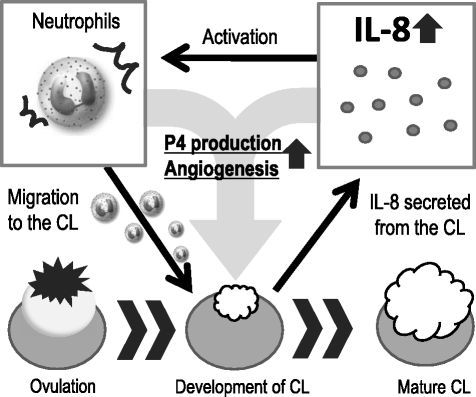Effect of aging on the female reproductive function
- PMID: 29201428
- PMCID: PMC5683335
- DOI: 10.1186/s40834-017-0050-9
Effect of aging on the female reproductive function
Abstract
Aging is a complex biological process that involves the accrual of bodily changes over a long life span. In humans, advanced maternal age is associated with infertility and adverse pregnancy complications. Cellular and organic senescence is hypothesized to contribute to the age-related decline in reproductive function. Accumulating evidence suggests that immune cells play pivotal roles in physiological reproductive function and pregnancy. The concept of "inflammaging" has recently emerged- an age-dependent, low-grade, chronic, and systemic inflammatory state induced by the senescence-associated secretory phenotype (SASP), which is produced by the innate immune, parenchymal, and nonparenchymal cells within the organs. In the present review, we discuss how cellular senescence and inflammaging accelerate reproductive failure in women by promoting SASP and immune-senescence during the establishment of pregnancy. In addition, we discuss the role of immune cells and their senescence in reproductive function, particularly in the ovaries (the corpus luteum), oviduct, and uterus.
Keywords: Aging; Corpus Luteum; Immune cells; Oviduct; Senescence; Uterus.
Conflict of interest statement
Ethics approval and consent to participate
No applicable.
Consent for publication
No applicable.
Competing interests
The authors declare that they have no competing interests.
Publisher’s Note
Springer Nature remains neutral with regard to jurisdictional claims in published maps and institutional affiliations.
Figures


References
-
- Sanches BV, Marinho LS, Filho BD, Pontes JH, Basso AC, Meirinhos ML, Silva-Santos KC, Ferreira CR, Seneda MM. Cryosurvival and pregnancy rates after exposure of IVF-derived Bos indicus embryos to forskolin before vitrification. Theriogenology. 2013;80:372–377. doi: 10.1016/j.theriogenology.2013.04.026. - DOI - PubMed
Publication types
LinkOut - more resources
Full Text Sources
Other Literature Sources

